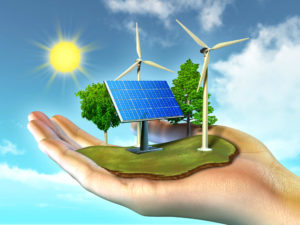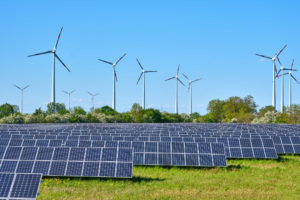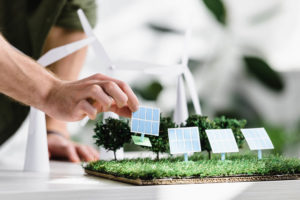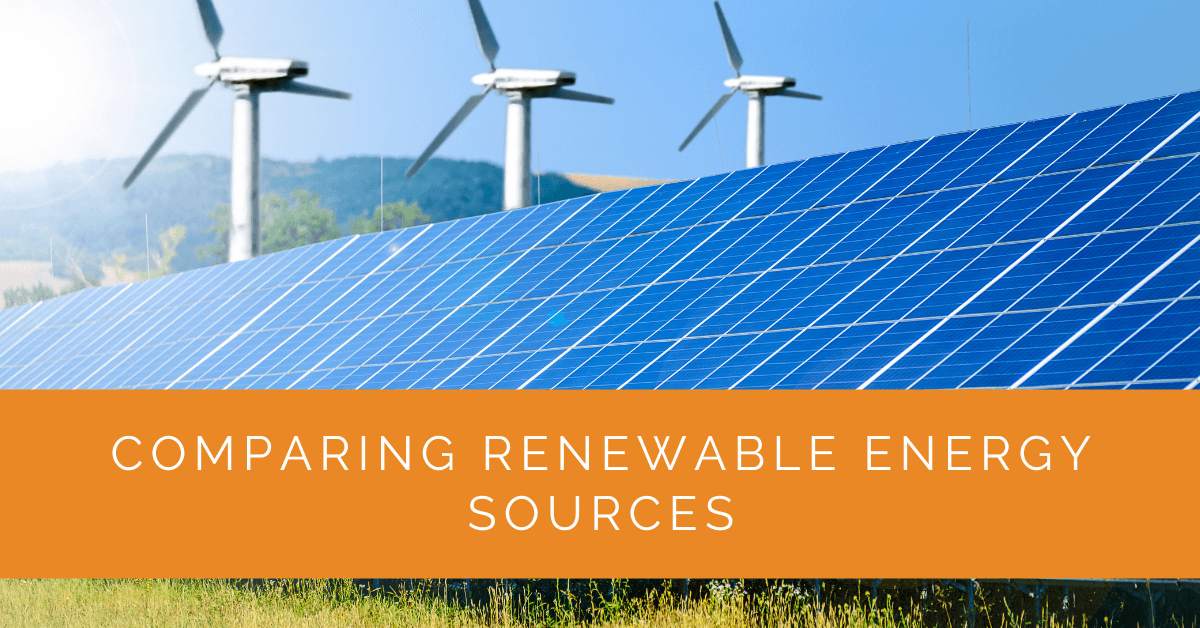The world is increasingly recognizing the importance of renewable energy as a sustainable and clean alternative to fossil fuels. This article dives into renewable energy sources, comparing their benefits, costs, and environmental impact. By understanding the various renewable energy options available, we can make informed decisions and contribute to a greener future.
Contents
Key Takeaways
- Renewable energy sources, such as solar, wind, hydropower, geothermal, and biomass, offer sustainable and cleaner alternatives to fossil fuels, mitigating climate change and reducing greenhouse gas emissions.
- When comparing renewable energy sources, factors include availability, efficiency, cost, and environmental impact.
- Transitioning to low-carbon energy alternatives is crucial for a greener and more sustainable future, and a diversified energy mix incorporating various renewable sources is essential for meeting our energy needs while reducing environmental harm.
Solar Energy
Harnessing the Power of the Sun
Solar energy, derived from the sun’s radiation, has gained significant popularity as a renewable energy source. Solar panels, composed of photovoltaic cells, convert sunlight into electricity. These panels can be installed on rooftops or in solar farms to capture sunlight efficiently.
How Solar Panels Work
When sunlight strikes the solar panels, it excites the electrons within the cells, creating a flow of electricity. This direct current (DC) is then converted into alternating current (AC) through an inverter, making it compatible with standard electrical systems.
Advantages of Solar Energy
Solar energy offers numerous advantages. It is a clean and abundant power source, emitting no greenhouse gases or harmful pollutants. Additionally, solar panels require minimal maintenance and have a long lifespan. Solar energy also provides energy independence and can help reduce electricity bills through net metering programs.
Limitations and Challenges of Solar Energy
Despite its many benefits, solar energy has a few limitations. It is an intermittent energy source, relying on sunlight availability. Cloudy days and nighttime affect its energy production. The initial installation costs of solar panels can be high, although they have been declining steadily. Furthermore, storing excess solar energy remains a challenge, necessitating the development of efficient and affordable energy storage solutions.

Wind Energy
Tapping into the Power of Wind
Wind energy harnesses the kinetic energy of the wind to generate electricity. Wind turbines, equipped with blades that rotate when exposed to wind, capture this energy and convert it into electrical power.
Wind Turbines and Their Functionality
Wind turbines have three main components: the rotor, generator, and tower. The rotor, comprising multiple blades, rotates as the wind blows, transferring kinetic energy to the generator. The generator then converts this mechanical energy into electrical energy.
Benefits of Wind Energy
Wind energy is a clean and renewable source that produces no greenhouse gas emissions or air pollution during operation. It is also highly scalable, able to generate electricity on both small and large scales. Wind power has the potential to create jobs and foster local economic development in regions with favorable wind resources.
Considerations for Wind Energy Implementation
The installation of wind turbines requires careful planning and consideration. Factors such as wind speed, turbulence, and proximity to residential areas and wildlife habitats must be evaluated. Adequate transmission infrastructure is also essential for efficient power distribution.
Hydropower
Harnessing the Power of Water
Hydropower utilizes the energy of flowing or falling water to generate electricity. It is one of the oldest and most widely used renewable energy sources.
The Role of Dams and Turbines
Hydropower plants typically involve the construction of dams across rivers or reservoirs to create a height difference. The water is then released through turbines, causing them to rotate and activate generators, converting mechanical energy into electrical energy.
Environmental Impacts of Hydropower
While hydropower is a renewable energy source, it does have environmental impacts. The construction of dams can alter ecosystems and disrupt natural water flow. It may affect fish migration patterns and lead to habitat loss. However, modern hydropower projects strive to incorporate fish ladders and minimize environmental damage.
Advantages and Disadvantages of Hydropower
Hydropower offers significant advantages, including its high energy conversion efficiency and ability to provide a steady and reliable power supply. It also serves as a valuable source of renewable energy that can be dispatched quickly to meet peak electricity demands. Additionally, hydropower reservoirs can serve multiple purposes, such as flood control and irrigation.
However, there are also disadvantages associated with hydropower. The construction of large-scale dams can result in the displacement of communities and the loss of natural habitats. It can alter downstream river ecosystems and impact the natural flow of sediment, potentially leading to downstream erosion. Moreover, extreme weather events and climate change can affect water availability, affecting the overall generation capacity of hydropower plants.

Geothermal Energy
Tapping into Earth’s Heat
Geothermal energy harnesses the heat from within the Earth to generate electricity. This renewable energy source relies on the natural geothermal heat flux from the Earth’s core.
Geothermal Power Plants and Geothermal Heat Pumps
Geothermal power plants utilize hot water or steam reservoirs beneath the Earth’s surface. Wells are drilled to access these geothermal reservoirs, and the steam or hot water is used to drive turbines, generating electricity. On the other hand, geothermal heat pumps utilize the Earth’s stable temperature to provide heating and cooling for residential and commercial buildings.
Benefits and Challenges of Geothermal Energy
Geothermal energy offers several advantages. It is a continuous and reliable power source, unaffected by weather conditions. Geothermal power plants produce minimal greenhouse gas emissions, making them environmentally friendly. Geothermal heat pumps provide efficient heating and cooling, reducing reliance on traditional HVAC systems.
However, geothermal energy has limitations and challenges. It is geographically dependent, with suitable resources concentrated in specific regions. Drilling and exploration costs can be high, and identifying viable geothermal reservoirs requires extensive geological surveys. There is also the potential risk of releasing naturally occurring gases and chemicals during the drilling process.
Biomass Energy
Utilizing Organic Matter for Energy Production
To produce heat and electricity, biomass energy uses organic materials, such as wood, agricultural residues, and dedicated energy crops. Biomass can be combusted, converted into biogas through anaerobic digestion, or transformed into biofuels.
Biomass Conversion Technologies
Biomass can be converted into energy through various processes. Direct combustion involves burning biomass to produce heat, which can be used for space heating or to generate steam for electricity production. Anaerobic digestion breaks down organic matter to produce biogas, primarily composed of methane, which can be used as a fuel for heating or electricity generation. Biomass can also be converted into liquid biofuels, such as ethanol and biodiesel, through fermentation and transesterification.
Environmental and Sustainability Considerations
Using biomass for energy production can have positive and negative environmental impacts. Biomass is considered carbon-neutral because the carbon dioxide emitted during combustion is offset by the carbon absorbed by plants during their growth. However, the sustainability of biomass energy depends on responsible sourcing, ensuring the use of waste or sustainably managed biomass resources, and avoiding the depletion of natural forests or food crops.
Pros and Cons of Biomass Energy
Biomass energy offers several advantages. It utilizes organic waste materials, reducing the reliance on landfills and contributing to waste management. It provides an opportunity for rural economic development, as biomass resources can be locally sourced and processed. Additionally, biomass can serve as a reliable source of baseload power.
However, there are challenges associated with biomass energy. The availability of biomass resources may be limited, and transportation costs can be significant. Biomass combustion can also produce particulate matter emissions and other pollutants, requiring proper control and monitoring to ensure air quality.

Comparing Renewable Energy Sources
Factors for Comparison: Availability, Efficiency, Cost, and Environmental Impact
When comparing renewable energy sources, several factors come into play. Availability refers to the geographical distribution of the energy source and its potential for widespread implementation. Efficiency measures how effectively the energy source can convert its primary input into usable energy. Cost considerations include the initial investment, operational expenses, and the long-term affordability of the energy source. Finally, the environmental impact examines each renewable energy source’s emissions, land use, and other ecological factors.
Renewable Energy Sources in Relation to Climate Change Mitigation
One of the primary motivations for transitioning to renewable energy is the need to mitigate climate change. Renewable energy sources, such as solar, wind, geothermal, hydropower, and biomass, produce little to no greenhouse gas emissions during operation. By replacing fossil fuels with these low-carbon alternatives, we can reduce the amount of carbon dioxide (CO2) and other greenhouse gases released into the atmosphere, thereby mitigating the impacts of climate change.
Synergies and Trade-offs among Different Types of Renewable Energy
Each renewable energy source has its unique strengths and limitations. Solar energy excels in sunny regions and can be easily installed on rooftops, while wind energy is most effective in areas with consistent wind patterns. Hydropower requires suitable water resources, and geothermal energy is geographically dependent. Biomass energy relies on available organic waste or dedicated energy crops. Understanding the synergies and trade-offs among these renewable energy sources allows for strategic planning and a diversified energy mix.
Non-Renewable Energy Sources
Understanding the Limitations of Fossil Fuels
Non-renewable energy sources, such as coal, oil, and natural gas, have powered our world for centuries. However, their combustion releases significant amounts of CO2 and other pollutants, contributing to air pollution and climate change. The finite nature of these resources raises concerns about energy security and price volatility.
Impacts of Non-Renewable Energy Sources on Climate Change
Burning fossil fuels is a major contributor to anthropogenic CO2 emissions, driving climate change. The extraction, transportation, and combustion processes associated with non-renewable energy sources result in significant greenhouse gas emissions. The reliance on these sources further exacerbates environmental degradation and air pollution.
Transitioning to Low-Carbon Energy Alternatives
The urgency to combat climate change has led to a global shift towards low-carbon energy alternatives. Renewable energy sources, alongside nuclear power, play a crucial role in reducing greenhouse gas emissions and diversifying the energy industry. Despite its controversy, nuclear energy offers a low-carbon option with a high energy density. However, it poses unique challenges like waste disposal and potential safety concerns.
Expert Insights From Our Solar Panel Installers About Comparing Renewable Energy Sources
Solar energy is a game-changer in the renewable sector. Its ability to provide clean, abundant power with minimal maintenance makes it an attractive option for many homeowners and businesses.
Senior Solar Installer
Wind energy’s scalability and job creation potential make it a key player in the transition to renewable energy. Proper planning and site selection are crucial to maximize efficiency and minimize environmental impact.
Solar Energy Consultant
Hydropower remains a reliable and efficient source of renewable energy. While it comes with environmental considerations, modern advancements are mitigating its impact on ecosystems.
Solar Installation Expert
Experience Solar Excellence with Us!
Trust in Solar Panels Network USA, where our seasoned experts deliver top-quality solar solutions for homes and businesses nationwide. With a legacy of countless successful installations and a commitment to sustainable energy, we’re your reliable partner in the solar journey. Ready for a brighter, eco-friendly future? Call us now at (855) 427-0058 and harness the power of the sun!
Conclusion
Renewable energy sources offer a sustainable and cleaner path forward for our energy needs. Solar energy harnesses the sun’s power, while wind energy captures the wind’s kinetic energy. Hydropower utilizes the force of water and geothermal energy taps into Earth’s heat. Biomass energy makes use of organic matter. By comparing these renewable energy sources, and considering factors such as availability, efficiency, cost, and environmental impact, we can make informed choices that contribute to a greener and more sustainable future. Transitioning away from non-renewable energy sources is vital to mitigate climate change and ensure a cleaner and healthier planet for future generations.
About the Author
Solar Panels Network USA stands at the forefront of solar energy solutions, driven by a team of seasoned solar engineers and energy consultants. With over decades of experience in delivering high-quality solar installations and maintenance, we are committed to promoting sustainable energy through customer-centric, tailored solutions. Our articles reflect this commitment, crafted collaboratively by experts to provide accurate, up-to-date insights into solar technology, ensuring our readers are well-informed and empowered in their solar energy decisions.

